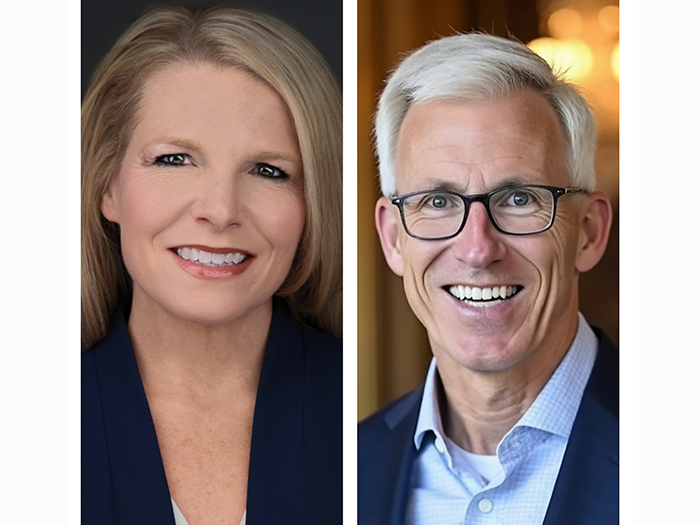Can Insurers Help the Aviation Industry Reach Net Zero by 2050?

Part 1 of this three-part series on insuring the energy transition in the transportation industry examines the logistical and regulatory hurdles facing the rail industry, and what the insurance industry can do to mitigate its risks and facilitate much-needed collaboration.
Part 2 explores the risks and benefits benefits of publicizing a formal ESG platform through a marine insurance lens.
Part 3 continues below.
Climate change is an urgent issue that demands immediate systemic change — but systemic change isn’t the kind of thing that should be rushed.
It requires caution, consideration and, ultimately, time.
In committing to reduce its emissions linked to climate change, the aviation industry is caught between the two horns of this dilemma.
In October 2021, the International Air Transport Association (IATA) — the trade association that represents and maintains the operational safety of about 320 of the world’s commercial airlines — pledged to achieve net zero by 2050.
It’s an admirable goal, but one that will require disruption of the entire aviation industry. It will require cooperation between not just airlines and manufacturers but also regulators, insurers and consumers.
Reaching net zero will also require significant investment. And, dauntingly, it’s still not entirely clear if the goal is achievable — or how.
But whatever the approach, airlines and aircraft manufacturers will look to insurers to help them meet the challenge.
As Kenneth Quinn, a partner at Clyde & Co. and general counsel to the Flight Safety Foundation for the past 25 years, told Risk & Insurance, “The insurance industry can play a very positive role in helping to provide cover for the introduction of new technology and aircraft to enhance sustainability.”
Trimming Our Wings
There are really only three ways to reduce aviation’s carbon footprint: fly less, convert to fuels and aircraft that pollute less (or not at all), or continue to emit carbon but offset it.
Pursuit of the first strategy is already underway in some markets. Earlier this year, France banned short-haul flights, defined as any trip that could be completed by train in under 150 minutes.
Another proposal would see the elimination of private jets. Not only are private jets more likely to make short-haul flights but they also emit as much as 14 times the carbon per passenger as do large aircraft. As a result, the 1% of the population that flies on private planes is responsible for half the greenhouse gasses emitted by flying.
The catch, of course, is that in order to work, the “fly less” strategy (especially so designed) requires ample train infrastructure, something that most of the world still longs for.
Widespread electric rail could replace much air travel with a lower-carbon alternative, in theory, but would require a major investment of time, money and real estate; while rail expansion projects have been proposed, building out this kind of infrastructure — especially if it’s to be low-emission — will take many years of coordination across many different organizations.
In regions without rail corridors, redirecting air traffic onto highways would simply replace one source of carbon emissions with another.
And all those car trips are not without their risks: It’s well known that air travel is the safest on a passenger-mile basis, so if people make those journeys on ever-more-crowded roadways, we can expect to see an uptick in traffic accidents.
Asking airline travelers to drive instead would almost certainly result in more fatalities overall.
Would flying less reduce carbon emissions? There’s evidence it would, if it’s not replaced with another fossil-fuel-powered mode of transport.
Early in the COVID-19 pandemic, when air travel dropped significantly, emissions decreased roughly 8.6% year-over-year in the top 10 most carbon-emitting countries — and while not all of that difference is the result of planes being grounded (the aviation industry is responsible for only about 2% of carbon emissions globally), it was a contributor.
But was the drop in flights a net positive?

Kenneth Quinn, partner at Clyde & Co., general counsel to the Flight Safety Foundation
In a recent editorial, Quinn was emphatic: “The aviation industry does not need unrealistic mandates. Cutting flights, imposing carbon taxes on an already overtaxed industry or applying emissions trading schemes extraterritorially do not make sense. Aviation is simply too important to world trade — connecting cultures and lifting people out of poverty — to use such blunt instruments.”
In fact, COVID lockdowns aside, global air travel is burgeoning, especially in regions that have traditionally been underserved. Even paring back short-haul or low-occupancy flights, we could still expect to see an overall rise in air travel. And carbon notwithstanding, reducing air travel isn’t just unlikely — it’s undesirable.
“I don’t think there’s going to be decreased air travel,” Quinn told Risk & Insurance.
“We’re increasing; I think most estimates are 3% a year. So while our greenhouse gas emissions will continue to grow with the growth of air travel, as you see in emerging middle classes, in India and so many parts of the world … and all the trade, tourism, jobs, economic benefits that are associated with that, we could still find ourselves with 40% growth in air travel by 2050, when we’re all supposed to be net-zero by 2050.”
Blue-Sky Thinking
If reducing air travel is unfeasible or undesirable, one alternative is to use aircraft that don’t pollute.
In fact, aircraft have already made drastic improvements in fuel efficiency.
“In the last 60 years, the aviation industry has cut fuel burn and CO2 emissions per seat-kilometer by more than 80%, NOx emissions by 90% and noise by 75%,” a spokesperson from aircraft manufacturer Airbus told Risk & Insurance. “[Our] commercial aircraft products can deliver more than 20% lower emissions than fleets they replace”; much of this improvement comes down to engine and wing design, as well as software that optimizes flight plans, climbs and descents.
But can we cut these emissions to zero? It’s proven effective for cars — where are the electric airplanes?
Unfortunately, weight is simply too great a factor in aircraft, and batteries in their current form are extremely heavy. Electric air travel may one day be commonplace for short flights — such as urban air mobility, analogous to a cross-town taxi ride — but there’s no foreseeable pathway to battery-powered intercontinental commercial air travel.
Our reliance on fuel-burning engines, then, will require us to look at new fuels.
Here, there are two possible paths.
The first, a somewhat utopian approach, is to replace all fleets with aircraft that burn net-zero fuels — hydrogen, for example, which can be burned without releasing carbon into the atmosphere, or ethanol, which releases only as much carbon as its production captures.
There are already hydrogen concepts underway, and it’s very possible that hydrogen-burning planes will fill our skies a century from now.
Aircraft developer ZeroAvia, for instance, has unveiled a 76-seat hydrogen-fueled concept in collaboration with Alaska Airlines. Airbus, meanwhile, is working on four concepts, including hybrid, hydrogen and fully electric models; “Our ambition is to put a hydrogen-powered aircraft into service by 2035,” a spokesperson told Risk & Insurance.
But the near-term challenges facing hydrogen-powered aircraft are enormous.
The energy density of hydrogen is two-thirds lower by volume than that of Jet A, the fuel most commonly used today (although it’s also lighter, making it two-and-a-half times more energy-dense by weight).
This means any conversion to hydrogen will require planes to vastly improve aerodynamic efficiency or carry more fuel to be able to travel the same distances.
The hydrogen that would potentially be used to power aircraft would also need to be stored in liquid form; it requires energy to manufacture liquid hydrogen, and to store and transport it at sub-zero temperatures.
This will never be a totally self-sustaining process — it will always require some outside source of energy to power it, and depending on the source of that energy, it may entail the emission of greenhouse gases further up the supply chain.
The generation, storage and transport of liquid hydrogen also bears many of the same risks as more traditional fuels — though notably, hydrogen is less likely to auto-ignite than Jet A and causes far less environmental damage when leaked. There’s nothing to suggest that hydrogen is inherently more volatile or dangerous than other jet fuels apart from our lack of familiarity with it.

David Watkins, SVP, head of aviation, QBE
“The actual energy stored in hydrogen is very good, but the fuel itself introduces safety issues, let alone the new technology, where we won’t have 100 years of testing,” said David Watkins, SVP, head of aviation at QBE. “It’s still internal combustion … but you’re introducing a whole new set of variables that will impact safety.”
“Hydrogen has a release of certain molecules that can create metallurgical problems within the airframe itself,” Quinn added.
Insurers can calculate the risks of hydrogen-powered flight with a fair degree of accuracy, considering its novelty, by understanding the fuel’s chemical properties and looking to other activities — traditional aviation’s use of Jet A, for instance, or the oil refining industry’s use of hydrogen.
Still, as long as the technology is applied to a novel purpose like flight, underwriters will approach it with caution.
“Can the insurance industry provide cover for the development of hydrogen-powered aircraft with some significant risks?” Quinn asked.
The public, too, may be leery of hydrogen-powered flight, at least initially.
The cultural memory of the Hindenburg remains vivid, as Quinn pointed out. “How do you deal with customers’ perception of hydrogen?”
With the stakes so high — especially in today’s TPLF-fueled environment — it seems there’s little room for error.
“One accident in commercial aviation is not only catastrophic, but it’s the subject of unrelenting publicity,” Quinn said.
“There seems to be an overzealous response by certificating authorities to increasingly question the airworthiness of an aircraft and to ground it, which by itself causes millions if not over a billion in claims for loss of use or damages from non-delivery and delayed delivery, and it causes supply chain disruptions.”
While that’s true of aviation in general, the use of technology that’s still experiencing growing pains — in the eyes of juries, if not in reality — can only serve to multiply the effect.
“How do you convince a juror to look at a broader picture of the increasing safety of commercial aviation when they’re faced with the terrible loss and tragedy of someone who’s died in an aviation accident?” Quinn said.
“But these cases are not going to turn on the broader safety story. Cases are going to turn on the particular facts of an accident.”
Most importantly, hydrogen is incompatible with the aircraft flying today — craft that can easily cost eight figures and take four months to build, and are designed to stay in operation for 30 years.
The total number of aircraft worldwide currently sits at about 25,000; some back-of-the-napkin math reveals that the investment it will take to replace all aircraft currently in operation is astronomical.
“It costs billions and billions of dollars to design and modify new aircraft,” Watkins explained.
“About 20% of the modern global airline fleet is new age equipment, high-efficiency equipment; 80% is still old … So there’s a massive, massive economic impact. Interest rates right now have a huge effect on financing for airlines. Can the airlines afford this new equipment, and do they want to?”
Combined, these two factors — the lack of historical underwriting data and the need to spread fleet replacement out over a decades-long timeframe — makes hydrogen-powered flight a worthy long-term goal but not a feasible path to net zero by 2050.
Burning Clean
Another fuel-oriented strategy is to replace the fuel, not the airliners that burn it.
That’s the thinking behind sustainable aviation fuel (SAF), including so called “drop-in” fuels that offer the big advantage of being compatible with existing aircraft.
SAF is made by blending traditional jet fuel with renewable biofuels like hydrocarbons made from plant oils or corn-derived ethanol. It’s able to achieve roughly the same energy output as Jet A, but because it’s manufactured from renewable biomass, its carbon footprint is smaller.
And because it can be used in much the same way as traditional fuels, experimenting with SAF is much easier — it’s still an internal combustion process, which engineers have been working with for over a century.
“Airlines are all running SAF tests on their aircraft and are actually using it on some commercial flights,” Watkins said, “and that’s being insured already.”
As a result, SAF “will be insurable,” he said.
“I think it’d be a challenge and quite expensive to insure a hydrogen-powered aircraft, just like electric aircraft today are more difficult to insure, because it’s an extremely high-risk endeavor. SAF-powered flights are a much less risky endeavor — most of the testing is done already on the ground,” Watkins said.
“We’re employing the same technology and safety processes to engines that are running SAF that we do to non-SAF engines.
“We price as the technology evolves,” Watkins added, “and I think the more we deviate from the standard, the more it will become a challenge.”
Thanks to its relatively high level of insurability, SAF is already in use, albeit in small quantities.
The limiting factor here is not safety or effectiveness but availability: Because it’s made from plant (by)products, it requires large quantities of agricultural land to produce.
At present, the EU’s supply of SAF covers less than 0.05% of its total aviation fuel needs; the European Commission has proposed raising this proportion to 63% by 2050 — an ambitious target that will require 31.5 million U.S. tons of SAF a year. By one estimate, the UK would need to devote 68% of its present-day feedstock to meet its current fuel needs using SAF.
In the U.S., SAF production reached 15.8 million gallons in 2022, enough to offset less than 0.1% of U.S. airlines’ fuel needs.
“While the importance of SAF in decarbonizing aviation is recognized, the market is still not fully established,” Airbus’ spokesperson explained. “This is due in particular to the fact that sustainable fuels are structurally more expensive — availability of the raw materials and the production processes — and there is not enough volume available to meet the demand.
“It will take a great deal of effort to agree and introduce the right political measures and support measures, to demand economic efficiency and technological conditions, and to secure the industrial ramp-up. A clear, stable and consistent policy at global and local levels — as well as incentivization and regulations — are needed to promote long-term investments and technology development.”
Industry groups are already working to secure their future SAF supplies, as exemplified by Airbus’ partnership with sustainable fuels technology company LanzaJet and airlines’ general rush to acquire reliable sources of feedstock.
Proof of concept is there, and plans are in place to steadily grow the supply of SAF. Long-term, SAF promises to safely and economically reduce aviation’s carbon output. But as with hydrogen, SAF is not a silver bullet. While SAF reduces carbon emissions, it can’t eliminate them entirely — some portion of SAF is always made up of fossil fuels.
It’s also worth mentioning that SAF is between three and five times as costly as petroleum-derived jet fuel, an economic factor working against its swift adoption.
“You can see the demand going down for fossil fuels,” Quinn said.
“As demand goes down for fossil fuels, the price is likely to go down.” As a result, it’s more difficult for commercial aviation to economically justify the conversion to SAF.
“So what economic incentives are going to be in place? What tax incentives, what governmental incentives are there going to be for SAF production as we transition, and what marketplace incentives are going to exist, other than that it’s a moral imperative?” Quinn added.
“Whatever the future is, whether it’s SAF or electric or hydrogen or the next big thing, [it has to be] something that makes economic sense.”
Given the technological and economic hurdles we still have to clear, our current tools for reducing carbon emissions before they happen won’t be enough. We’ll also need to remove carbon from the air after it’s released.
Walking Back the Damage
IATA has been pursuing a carbon offset strategy since the 2016 implementation of CORSIA — the Carbon Offsetting and Reduction Scheme for International Aviation — which imposed offsetting obligations effective in 2021.
There are multiple market-based measures to offset atmospheric carbon.
Some are very low-tech — like planting trees, a simple but slow-acting method, as trees planted today will take roughly a century to reach maturity.
Others are more cutting-edge.
Direct air carbon capture and storage (DDACS) essentially recreates the carbon-sink function of a forest at an industrial scale. While still experimental, the technology is gaining attention: In 2022, Airbus began working with the U.S. partner of Canadian DDACS firm Carbon Engineering to develop the technology at scale, and in October of this year announced is first airline partnership. Airbus predicts that by 2030, there will be dozens of DDACS facilities around the world.
The process is not without its own risks — the CO2 gas removed from the air has to go somewhere.
Whether it’s bound to make calcium carbonate and buried in the ground or converted into hydrocarbons that can be turned back into jet fuel, there are energy demands and environmental hazards.
Still, it holds much promise as a transitional solution, and as a way to reverse the damage caused by the release of atmospheric carbon — not only by the aviation industry but by all other hard-to-abate industries as well.
You can count on SAF, greater operational and technological efficiency, potentially even electric or hydrogen-powered flight — and most likely some combination of these — to reduce aviation emissions by 2050, but no net-zero scenario is complete without carbon capture and carbon offsets.
“Airbus has always said sustainability will be achieved through a combination of technologies and, above all, collaboration across industries to prepare the necessary infrastructure and governments to incentivize a sustainable aviation future,” Airbus’ spokesperson said.
Because even the most ambitious plans for hydrogen or SAF fall short of fully replacing fossil fuels — not to mention the time it will take to replace current fleets of airliners — any successful strategy will rely on such a multi-pronged approach.
Work Every Angle
For all its challenges, Quinn expects the industry to press on.
“It’s not going to give us pause to develop this new technology,” he said.
“This is the challenge of our times. It’s a moral imperative that we get greener, for next and future generations. Because in itself, it has cataclysmic ramifications for whole peoples and industries. There will be an unrelenting push toward adapting and experimenting and testing these new technologies, to transition away from fossil fuels.”
Insurers play a vital role in allowing airlines and aircraft manufacturers to take the risk of trying something new in an effort to address this pressing need.
They can provide cover — not just to respond to any potential disaster but also to protect against the inevitable missteps and delays emerging technologies encounter on the road to a successful rollout.
“The insurance industry has always been one to assist the airline industry,” Quinn said.
“It has certainly underwritten policies and provided cover for technologically superior, next-generation aircraft that are quieter and more fuel-efficient, and more reliable and safer … The insurance industry is going to need to be a reliable partner with OEMs [original equipment manufacturers] and airlines as we try to adapt aircraft and engine design to the future to incorporate sustainable aviation fuel.”
For insurers’ part, Watkins said, “we have supported sustainable aviation fuel providers. We absolutely look at an airline’s sustainability measures when we make a risk assessment in terms of how much capacity we want to deploy in and what pricing. We need to support our customers.”
Just as importantly, insurers can help to bring much-needed transparency to an enterprise that’s often clouded with ambiguity.
The phrase “net zero” has appeared throughout this series, but we can’t take for granted that it’s a neutral term or means the same thing to everyone.
Who’s definition of “net zero” are we using, and whose benchmarks? Do our efforts to reach it impact everyone equitably? How do we measure carbon emissions up and down an entire supply chain? How do we calculate and trace their offsets? How can we compare apples to apples across different types of fuel, across different industries, across state and national borders?
After providing cover, the insurance industry’s greatest contribution to aviation’s net-zero ambitions “would be to ensure that there’s a proper, uniform development of metrics to determine advancements in sustainability,” Quinn said.
“A lot of the claims being made today are greenwashing claims,” he continued, alluding to lawsuits targeting not only the industry’s efforts to lower emissions where it can but also the use of offsets where it can’t.
“There’s no proper accreditation authority to fully understand how we can benchmark today’s sustainability with tomorrow’s improvements,” Quinn continued.
“And I think the insurance industry can play a good role in the identification of uniform metrics, so that we can say, for example, ‘This offset program works,’ and if you buy so many credits — reforestation in Indonesia or Brazil, for example — it really does count. It’s not just something made up so someone can make money and someone can claim progress.”
While many still consider carbon offsets to be of dubious utility, they will prove indispensable if the aviation industry is to reach its carbon reduction goals by 2050.
The marketplace for carbon credits is new and evolving, and insurers are in a unique position to help it mature.
“Aviation has a history of breakthroughs, from the Wright Brothers to Neil Armstrong,” Quinn said.
“We’ve done big things in aviation and in space. I think we can do this. But what an enormous challenge for the future.” &










